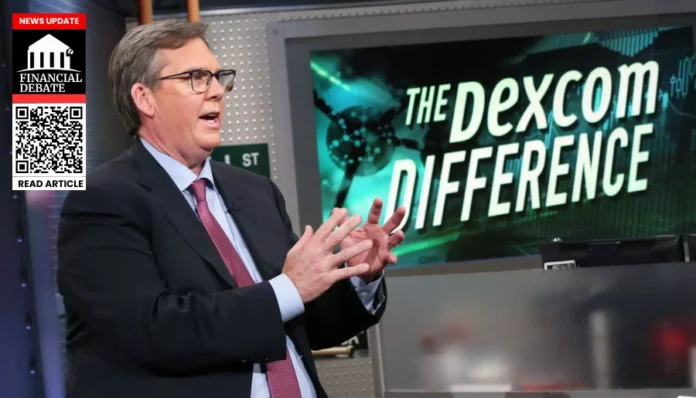- Dexcom beat EPS expectations with 45 cents, narrowly exceeding the anticipated 43 cents from Wall Street analysts.
- U.S. revenue fell 2%, raising investor concerns despite the overall increase in global quarterly revenue to $994 million.
- Leadership transitions include Teri Lawver’s retirement, as CEO Kevin Sayer assumes direct commercial oversight responsibilities.
Dexcom, a prominent player in the medical technology sector, faced a turbulent market reaction following its third-quarter earnings report, which revealed a complex financial landscape. Although the company posted earnings that exceeded analysts’ expectations, a notable 9% decline in its stock during after-hours trading highlighted the underlying concerns surrounding its U.S. revenue performance. The third quarter concluded with a reported earnings per share (EPS) of 45 cents, which edged ahead of the anticipated 43 cents, a promising indicator for investors and analysts alike.
While the overall revenue did see an increase—from $975 million to $994 million year-over-year—this figure was just marginally above the predicted $990 million. More troubling, however, was the 2% year-over-year decline in U.S. revenue, which slumped to $713.6 million from the previous year. The juxtaposition of positive earnings versus declining U.S. revenue raises critical questions about the company’s growth trajectory and market positioning.
Profitability Amidst Challenges
Despite the decline in U.S. revenue, Dexcom reported a net income of $134.6 million—up from $120.7 million in the same quarter the previous year. This translated to earnings of 34 cents per share, reflecting a positive trend in profitability, yet the mixed messaging of both revenue decline and profit increase seems to indicate an underlying volatility in the company’s business model.
For a firm that heavily relies on the diabetes management market through its continuous glucose monitoring (CGM) technology, sustaining a balance between growth and profitability can be particularly challenging amid fluctuating consumer demands and competitive pressures.
Additionally, the company’s recent launch of Stelo, an over-the-counter product aimed at non-insulin-dependent adults, highlights a strategic pivot towards expanding its customer base. However, these moves have not immediately translated into substantial revenue growth, raising concerns about their effectiveness in stabilizing U.S. sales.
Leadership Changes and Future Guidance
Leadership decisions further complicate the narrative. The announcement of Teri Lawver’s retirement as chief commercial officer underscores an ongoing period of transition for the company. As CEO Kevin Sayer takes the reins of the commercial team during this pivotal moment, his management choices will significantly impact Dexcom’s future strategies and revenue recovery as the company navigates through reshaping its operations.
Despite the challenges, Dexcom appears to have maintained a resilient outlook, keeping its full fiscal year guidance intact with revenue expectations between $4 billion and $4.05 billion. This consistency demonstrates a belief in the potential for recovery after adjusting to the sales team’s restructuring setbacks and fostering improved customer acquisition strategies.
In sum, while Dexcom’s latest earnings report reveals a complex mix of performance indicators, the market remains cautious. Investors will be closely watching the company’s ability to adapt and survive in a competitive landscape that demands innovation and customer engagement in the healthcare technology sector. Will Dexcom manage to convert its challenges into opportunities, or will the declines outweigh its positive earnings revelations? Only time will tell.
